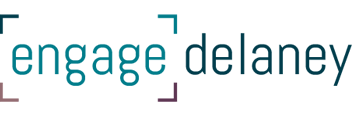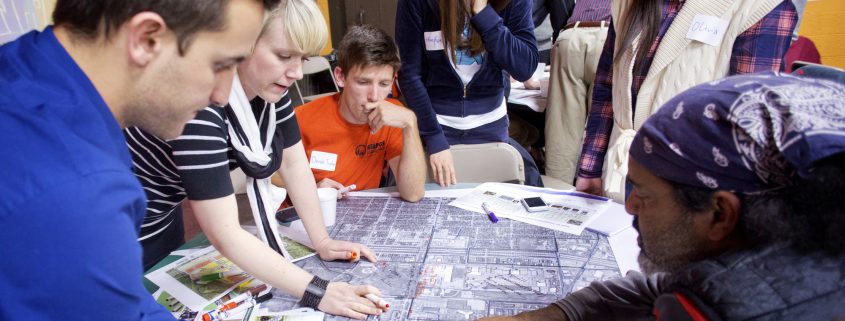Featured Technique: Charrette
Engage Delaney is excited to host the National Charrette Institute in Vancouver Nov. 14-16 to deliver its certificate training program. The 2.5-day, public course is open to everyone – register here.
As we anticipate this highly-applicable training, we’re exploring the details of this unique technique.
The context:
Traditionally used in community planning, urban planning or anything to do with the built environment, a charrette is a multi-day, intensive design workshop that brings together diverse stakeholders to co-develop creative solutions.
The charrette technique is based on a few key principles:
- Diversity: While professional planners certainly have expertise and training, there is great value in bringing diverse perspectives together to imaging the future of a street or neighbourhood. A professional planner will see things differently than a local homeowner, or a developer, or a tenant, or even a parent who frequents the park on the corner. Having all of those perspectives at the table, as well as other stakeholders, results in a more livable, dynamic area.
- Intensity: As an alternative to forming an advisory committee that meets monthly over the course of a year or two, the charrette technique is based on an immersive, intensive experience that is relatively short. Instead of picking away at a plan with short, interspersed meetings over a long period of time, the charrette brings diverse stakeholders together for a few days to really dive deep and concentrate to make quick progress.
- Collaboration: The intent of a charrette is to create an inclusive environment where shared learning, listening and collaboration take place, and a shared vision is the outcome.
Why use this technique?
We see momentum as one of the key benefits to the charrette technique. The process is intentionally designed to develop innovative, collaborative solutions and designs in a short period of time: What a refreshing and energizing experience to see a project progress so rapidly!
We also love the inclusivity of this technique – anyone who could be impacted by the project is invited to collaborate, and the process helps ensure no one voice can dominate.
This video offers some additional perspectives from charrette practitioners and participants about the benefits of the technique.
How does this technique work?
The NCI Charrette System process is divided into three phases:
- Preparation: There are many similarities here to the iap2 approach to engagement planning. Assessing and building organizational readiness, gathering applicable data, mapping the stakeholder community, communicating the project and opportunity to get involved, and planning the logistics of the charrette event are all included here.
- Charrette: This is the actual event, which the NCI recommends should last at least four days. However, not all stakeholders are involved throughout the full four days. The process typically begins with a public meeting to develop a vision, then the core project team develops some concepts, and then stakeholders are reengaged to offer feedback. The plan is further developed and refined in a series of working sessions and feedback loops.
- Implementation: Shortly after the charrette, the project team does some more in-depth analysis to ensure the plan is feasible. Any required refinements are made, and another feedback loop session is held. The project team then works to finalize the project drawings and other documents.
What is required to pull this off?
One of the key components is an experienced facilitator who is trained in the charrette method! Come and learn with us in November, and find out more.
Click here for more details about the Vancouver course, and info on how to register. Early bird pricing ends Sept. 30 – secure your spot today.




